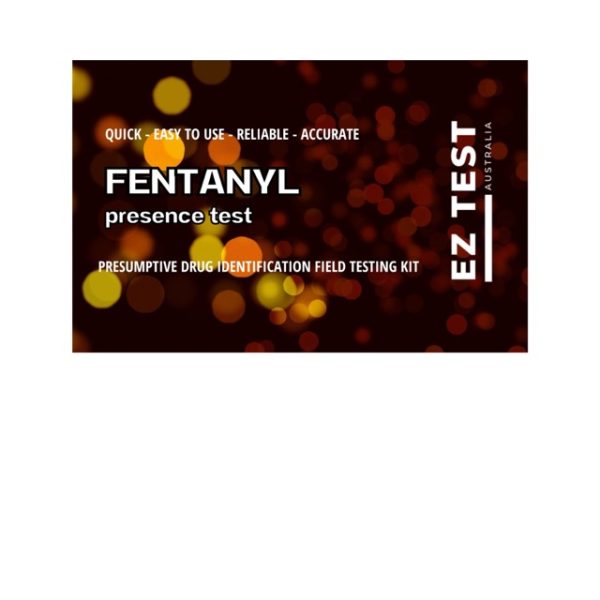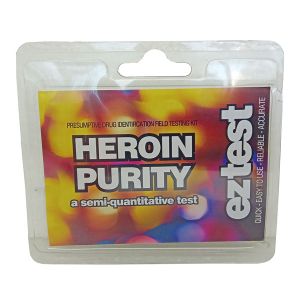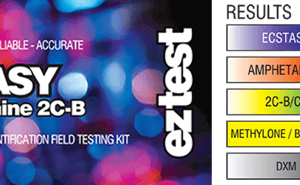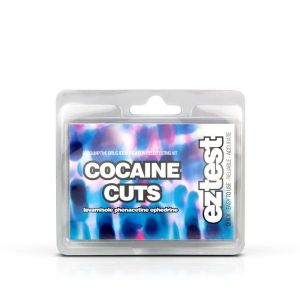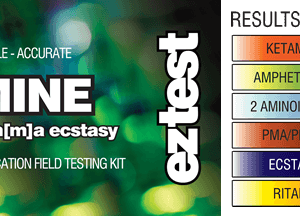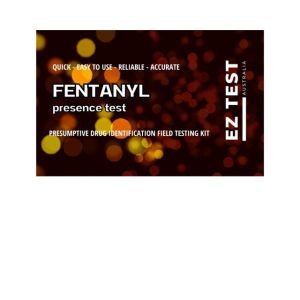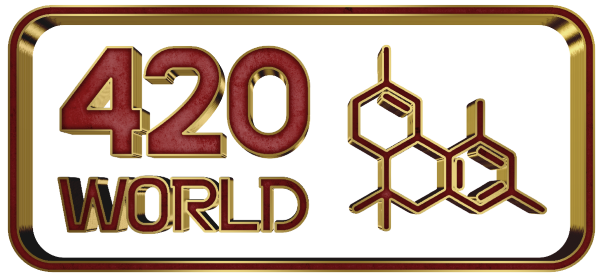


Need help? Call us:
08 8151 1368
Eztest | Fentanyl Presence Test
$15.00
5 in stock
Have product related questions?
Feel free to Give us a call
Fentanyl is a synthetic opioid, up to 100 times more potent than morphine. Ingesting a small amount of fentanyl can be lethal. It is sometimes sold as, or mixed with heroin, pressed into tablets, and used as a cutting agent in other drugs.
This fentanyl test is a rapid, visual test for fentanyl. With it, you can determine if your sample contains fentanyl. The detection limit of this test is 200ng/ml. This is the best fentanyl test kit on the market and has an accuracy rate of 99.2%.
This fentanyl test kit includes 1 fentanyl test, which can be used on:
- Powders
- Liquids
- Tablets
- Surface Residue
Analytical Specificity:
The following table lists compounds that are positively detected in oral fluid by The FYL Rapid Test Panel at 5 minutes.
Compound Concentration (ng/mL)
Alfentanyl >600,000
Fenfluramine 100000
Norfentanyl 40
Buspirone 3000
Fentanyl 200
Sufentanyl 100000
Package contents:
- 1 Fentanyl Rapid Test
- 1 Bottle of Buffer
- Instructions and product insert
Directions For Use:
Test device (in closed pouches), samples, and controls should be brought to room temperature (15-30°C) prior to testing. Do not open pouches until ready to perform the assay.
Remove the test device from its protective pouch and label the device with patient’s identification or control label.
FOR SURFACES:
- Wipe with the panel over the surface in which the drugs are expected
- Take off the cap of supplied tube;
- Fill all buffers from the supplied tube of buffer into the protection cover.
- Insert the Multi Test slowly and carefully into the protection cover with buffer
- Wait for lines to appear on the membrane and read the results after 5 minutes and do not interpret the result after 10 minutes.
FOR SOLIDS:
- Open the tube and put the solid into the buffer.
- Close the tube with dropper and cap. Shake it a short time. Wait for 30 sec.
- Take off the cap of supplied tube;
- Fill all buffers with dissolved substances into the protection cover.
- Insert the Multi Test slowly and carefully into the protection cover with buffer.
- Wait for lines to appear on the membrane and read the results after 5 minutes and do not interpret the result after 10 minutes
INTERPRETATION OF RESULTS:
(Please refer to the illustration above)
NEGATIVE:* A coloured line appears in the Control region (C) and coloured lines appear in the Test region (T). This negative result means that the concentrations in the sample are below the designated cut-off levels for a particular drug tested.
*NOTE: The shade of the coloured lines(s) in the Test region (T) may vary. The result should be considered negative whenever there is even a faint line.
POSITIVE: A coloured line appears in the Control region (C) and NO line appears in the Test region (T). The positive result means that the drug concentration in the sample is greater than the designated cut-off for a specific drug.
INVALID: No line appears in the Control region (C). Insufficient specimen volume or incorrect procedural techniques are the most likely reasons for Control line failure.
Read the directions again and repeat the test with a new test card. If the result is still invalid, contact your manufacturer.
QUALITY CONTROL:
A procedural control is included in the test. A line appearing in the control region (C) is considered an internal procedural control. It confirms sufficient specimen volume, adequate membrane wicking and correct procedural technique.
Control standards are not supplied with this kit. However, it is recommended that positive and negative controls be tested as good laboratory practice to confirm the test procedure and to verify proper test performance.
LIMITATIONS:
- The FYL Rapid Test Panel provides only a qualitative, preliminary analytical result. A secondary analytical method must be used to obtain a confirmed result. Gas chromatography/mass spectrometry (GC/MS) is the preferred confirmatory method.
- A negative result may not necessarily indicate drug-free sample. Negative results can be obtained when drug is present but below the cut-off level of the test.
- This test does not distinguish between drugs of abuse and certain medications.
EXPECTED VALUES:
The negative result indicates that the drug concentration is below the detectable level. Positive result means the concentration of drug is above the detectable level.
Related products



